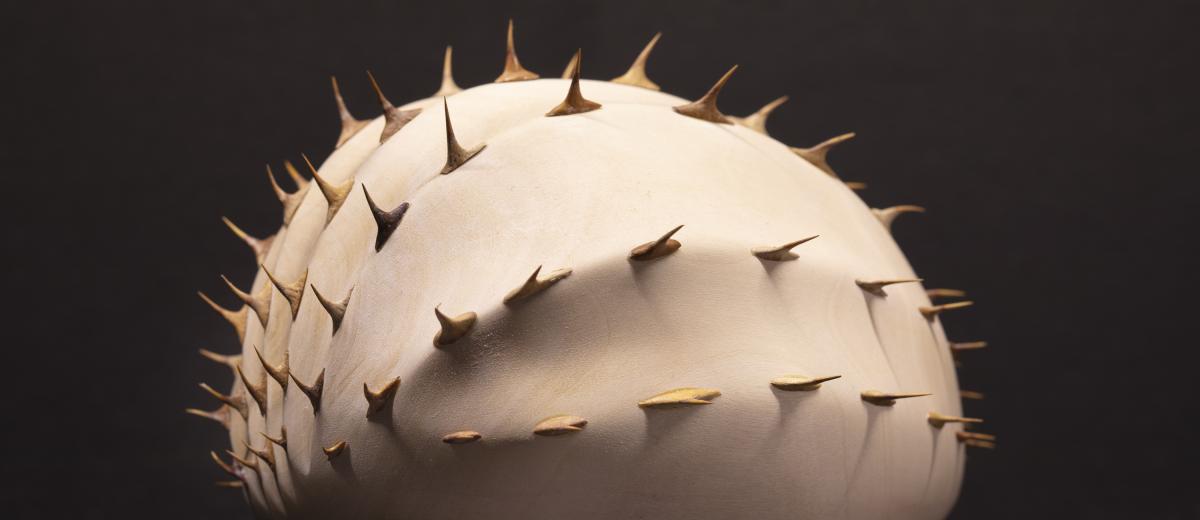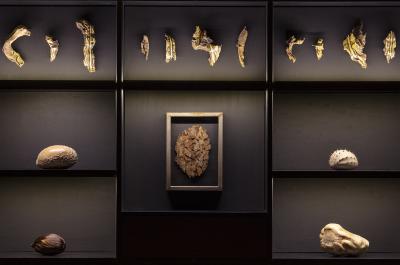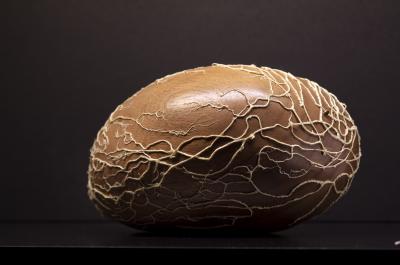H. Lélia Demoisy

Lélia Demoisy uses natural materials to illustrate our relationship with the living and develop a uniquely poetic universe which will be recreated in the Donkey Stables.
“As individuals, we live in a sort of uncertainty about how to experience our relationship with living forms, either animal or vegetable.”
Demoisy’s artwork tends to emphasise our bodily relationship to matter as a fundamental element in our relationship with the living. Her work consists of creating experiences to be had through the erection of sculptures or installations constructed of living materials such as wood, skin, teeth, or even nearly whole trees.
Through these transformations and associations, our conflicted expectations bring us physically “into conversation” with the near-life of her pieces. The final objective is to rediscover the feeling we have when we enter a sort of intimacy with anything produced by nature, when the experience is direct, spontaneous, and corporal. This feeling is an experience that we must have alone, detached from our social circle, since it is something that bypasses any oral reckoning.
The material produced by living things, whether it is a tooth or an entire tree, resonates more easily with our own body through mimesis and calls upon inexpressible memories linked to our own experiences with nature. The instinctive reading of the work goes against our preconceived notions of what these substances should be and how they should fit into our normal understanding of the world. Like the appearance of a chimera, the mixing of substances disturbs these certainties. In turn, they influence each other, interchange their characteristics, and uniquely redefine themselves. By creating an illusion with the living substance, a cedar trunk can become a pile of rocks, some thuja branches can become a rib cage, and steel can appear more alive than wood.
The artist’s pieces cannot be defined as representations but rather as quasi-living things whose hybridisation places them in an uncomfortable inbetweeness. These associations and transfers between substances bring forth a reflection on the resemblances between kingdoms. Architecture-types appear to reveal the structural similitude found in every living thing.
BIOGRAPHICAL NOTES


Lélia Demoisy lives and works in Yvelines.
She earned a degree in set design from the Arts Décoratifs in Paris in 2015 but decided to dedicate herself to the plastic arts when she received a “Jeune Talent” grant from the Fondation Mécène & Loire in 2016.
In 2014, she wrote a dissertation on the idea of fusion with nature, accompanied by a narrative of her personal experience of solitary immersion in the Canadian forest in the middle of winter. This research deeply influenced and set the guidelines for her work as a plastic artist.
With a preference for sculpture and installation, Demoisy seeks to study our individual relationship with nature and the living by recreating liveable experiences. All of Demoisy’s work tends to emphasise our bodily relationship to matter as a fundamental element in our relationship with the living.
Influenced by her family’s ties to Africa (in Senegal, Kenya, and Madagascar) as well as her own travels, Demoisy was hosted by the Trueno tribe for a residency in Patagonia, Argentina, in 2019, and began an investigative project using screen printing and Indian ink drawings.
Her work was shown by Lara Sedbon in group exhibitions and at salons such as DDessin or the upcoming AKAA.
In particular, she loves creating outdoor installations that help to reconsider the nature of the environment as a population of living beings, such as her light installation, Intimité, that was displayed for the first time in 2020 at the Parc de la Brunetterie in Orgeval and adapted for the trees in Paris’ Parc de la Villette in summer of 2021, as well as at La Motte Tilly castle under Valérie Arconati’s coordination of the 2021 Night of Museums.
She has also collaborated with landscape artists to directly incorporate living elements in her installations for Chaumont-sur-Loire (Special Jury Prize, 2015), Lausanne Jardins (2019), and Annecy Paysages (2021).


